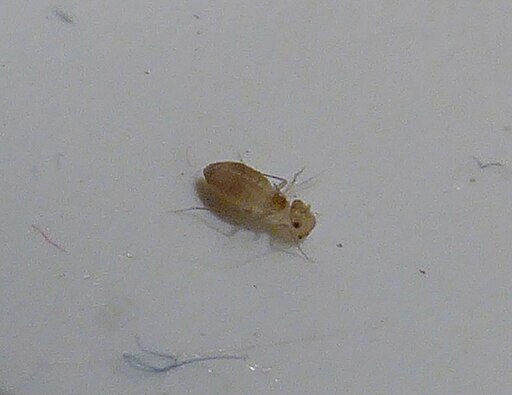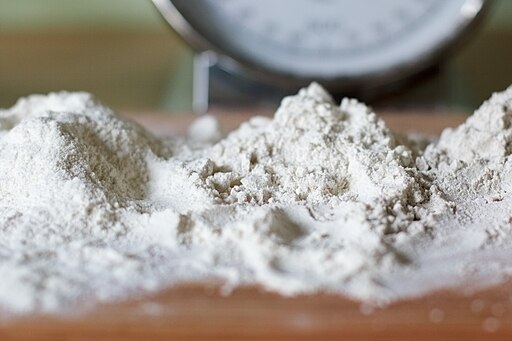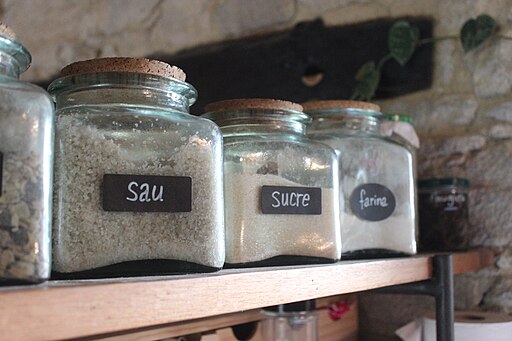Psocids in Flour: Here’s What to Do
You open a fresh bag of flour, scoop in a measuring cup — and there they are. Tiny, scurrying specks that look like dust or ground pepper.
Not a great start to your baking session.
But don’t panic. Those tiny insects are called psocids — also known as booklice. They’re not actually lice, they don’t bite, and they’re not harmful to humans. Still, no one wants bugs in their flour.
Especially if you run a commercial kitchen, bakery, or food production business. Because if psocids show up in your stockroom, they can signal deeper hygiene or humidity issues.
In this guide, we’ll walk you through everything you need to know:
- What psocids are and how to identify them
- Why they infest flour and dry goods
- The actual risks they pose (hint: it’s not what you think)
- How to get rid of them — fast
- How to prevent them from coming back
- When to bring in a professional pest control team like us at Merlin Environmental
Let’s start with what you’re probably thinking…
What Are Psocids (Booklice)?
Identification and Appearance
Psocids are tiny — just 1 to 2 millimetres long.
Soft-bodied, wingless (indoors), and usually pale grey or light brown, they’re often mistaken for flour mites or baby bed bugs. But unlike those pests, psocids don’t bite or spread disease.

You’ll usually spot them in:
- Flour
- Cereals
- Sugar
- Dried herbs
- Packaging crevices
They love dark, humid, undisturbed areas.
Kitchen cupboards and storerooms with poor airflow? Psocid heaven.
Psocid Life Cycle
- Eggs: Laid singly, often tucked in hidden crevices like folds of packaging or around dusty shelving
- Nymphs: Hatch in 1–2 weeks
- Adults: Mature within 2–3 months and live for around 6 months
- Seasonal peak: Numbers explode in late summer due to heat and humidity
Why Psocids Infest Flour and Dry Goods
Moisture Is the Primary Culprit
Here’s the deal: psocids don’t just appear out of nowhere. They’re drawn to one thing above all else — moisture.
Flour and similar goods naturally contain around 10–14% moisture content. That’s normally fine. But in warm, humid environments (think: commercial kitchens, back-of-house storage, or pantries with poor airflow), condensation builds. That encourages the growth of microscopic moulds — and mould is psocid food.
So, even if your flour looks “dry,” if the air around it is damp, you’re rolling out the welcome mat.
Flour as a Food Source
Psocids are primarily mould feeders — they graze on the invisible fungi that naturally grow on organic matter in humid conditions.

But if pickings are slim, they’ll happily chew through the flour itself — especially:
- Aged or stale flour
- Flour stored in open or torn packaging
- Bags that have been sitting unused for months
In other words, they’ll go for the low-hanging fruit first.
Flour Packaging and Cupboards as Habitat
Cardboard boxes. Paper bags. MDF chipboard shelving.
These are perfect homes for psocids — especially if tucked away in dark corners. Flour folds, box seams, and the cracks between the cupboard and the wall all trap moisture and provide shelter.
Worse still, they rarely get disturbed. Which gives psocids the peace and quiet they need to breed.
Cross-Contamination of New Stock
Many people think their new bag of flour is infested. But in reality? It’s the old infested goods that contaminated the new stock.
Psocids are mobile — they’ll migrate across shelves and onto any new product they detect. They can slip through tiny gaps in packaging or hitch a ride on containers and scoops.
So if you don’t get rid of the original infestation and fix the underlying moisture problem, it’ll just keep happening.
Are Psocids Harmful to Humans?
Health Risk Assessment
Let’s clear this up:
Psocids do not bite, sting, or transmit disease. They aren’t interested in people or pets, and they’re not a sign your home or kitchen is “dirty”.
That said, their presence does indicate a problem with excess humidity. And in heavy infestations, they can pose minor risks:
- Allergenic potential: Their shed skins and droppings may trigger mild allergic reactions in sensitive individuals, such as asthmatics.
- Mould growth: If psocids are thriving, chances are the underlying mould is too — and that can be a bigger issue if not managed.
So while psocids themselves aren’t directly dangerous, they are a symptom of conditions that can become problematic.
How to Get Rid of Psocids in Flour
Immediate Actions
If you’ve found psocids in your stock, here’s what to do right now:
- Discard all infested goods. Don’t risk salvaging “partially clean” bags — they’ll just reinfest your storage.
- Clean dry. Use a vacuum or dry cloth to clean cupboards, shelves, and containers. Don’t use water — it’ll just add more moisture.
- Increase airflow. Open windows, use fans, or invest in a desiccant dehumidifier to dry out the storage area fast.
- Inspect surrounding items. Check adjacent bags, containers, and corners for signs of spread and chuck out everything that’s been affected.
Storage Hygiene Tips
Want to make sure they don’t come back? Follow these best practices:

- Use airtight containers: Store all dry goods in sealed containers made of glass, plastic, or metal. Avoid cardboard or paper.
- Keep items off the floor: Ensure everything is high off the floor on racks or shelves, and leave space between the goods and the wall for airflow.
- Rotate your stock: Follow a strict “first-in, first-out” system to avoid forgotten, aged products.
- Label and date everything: Helps track how long items have been sitting and spot trends if issues arise.
Preventing Psocid Infestations in Commercial Premises
Humidity Control
If you only focus on removing the bugs but ignore the moisture, you’ll see them again in a few weeks.
In food production or catering, managing humidity is non-negotiable:
- Keep relative humidity below 50% in storerooms and dry areas
- Install industrial-grade dehumidifiers (desiccant types are ideal for cool climates)
- Monitor conditions using digital hygrometers
- Schedule ventilation — especially during or after cooking hours — to release trapped steam
- Fully investigate and resolve the cause of the humidity, whether it’s simply a lack of ventilation or something more structural like a slow leaking pipe or rising damp.
Pro tip: Review your kitchen’s layout. Are sacks of flour sitting against a cold external wall? That’s a hotspot for condensation.
Structural Proofing
Psocids are tiny — but if you seal their favourite hideouts, you can make your site less hospitable.
Here’s how:
- Seal cracks and gaps in chipboard shelves, cupboard joints, and flooring
- Fix any leaking pipes and get a builder to advise on any rising damp or other structural issues.
- Install brush seals on doors, especially leading to storerooms
Even a modest sealing job can significantly reduce harbourage opportunities.
Professional IPM Measures
Integrated Pest Management (IPM) isn’t just a buzzword — it’s the gold standard for food safety and pest control.
For psocids and similar pests, a good IPM strategy includes:
- Ongoing monitoring with sticky traps and environmental sensors
- Digital insect/rodent monitoring systems for remote alerts
- Routine site inspections focused on moisture, packaging condition, and sanitation
- Full documentation of pest control measures, aligned with BRC, IFS, and HACCP standards
When to Call a Professional
Sometimes, despite your best efforts, psocids just keep coming back.
Here’s when you should call in a professional pest control service like Merlin Environmental:
1. Recurring Infestations
If psocids keep reappearing despite:
- Discarding stock
- Improving storage
- Cleaning thoroughly
… then the root problem probably lies deeper — like a hidden moisture source or structural harbourage.
We’re trained to spot those blind spots.
2. High Humidity or Visible Mould
If your storeroom:
- Feels clammy
- Smells musty
- Has condensation or mould on packaging or walls
… it’s time for a full site assessment. Psocids are a red flag for broader moisture and hygiene issues — both of which can affect food safety compliance.
3. You’re in the Food Business
Food safety legislation is clear: pests must be prevented, monitored, and controlled.
For BRCGS, IFS or SALSA-certified sites, ongoing pest prevention isn’t optional — it’s mandatory. Psocids can damage your:
- Certification status
- Food hygiene scores
- Brand reputation
We offer expert-led pest control tailored to the needs of:
- Bakeries
- Commercial kitchens
- Food manufacturing plants
- Retail stockrooms, and warehouses
Our service includes:
- IPM plans and monitoring
- Moisture control solutions
- Structural inspections and proofing
- Detailed reporting to satisfy auditors and insurers

